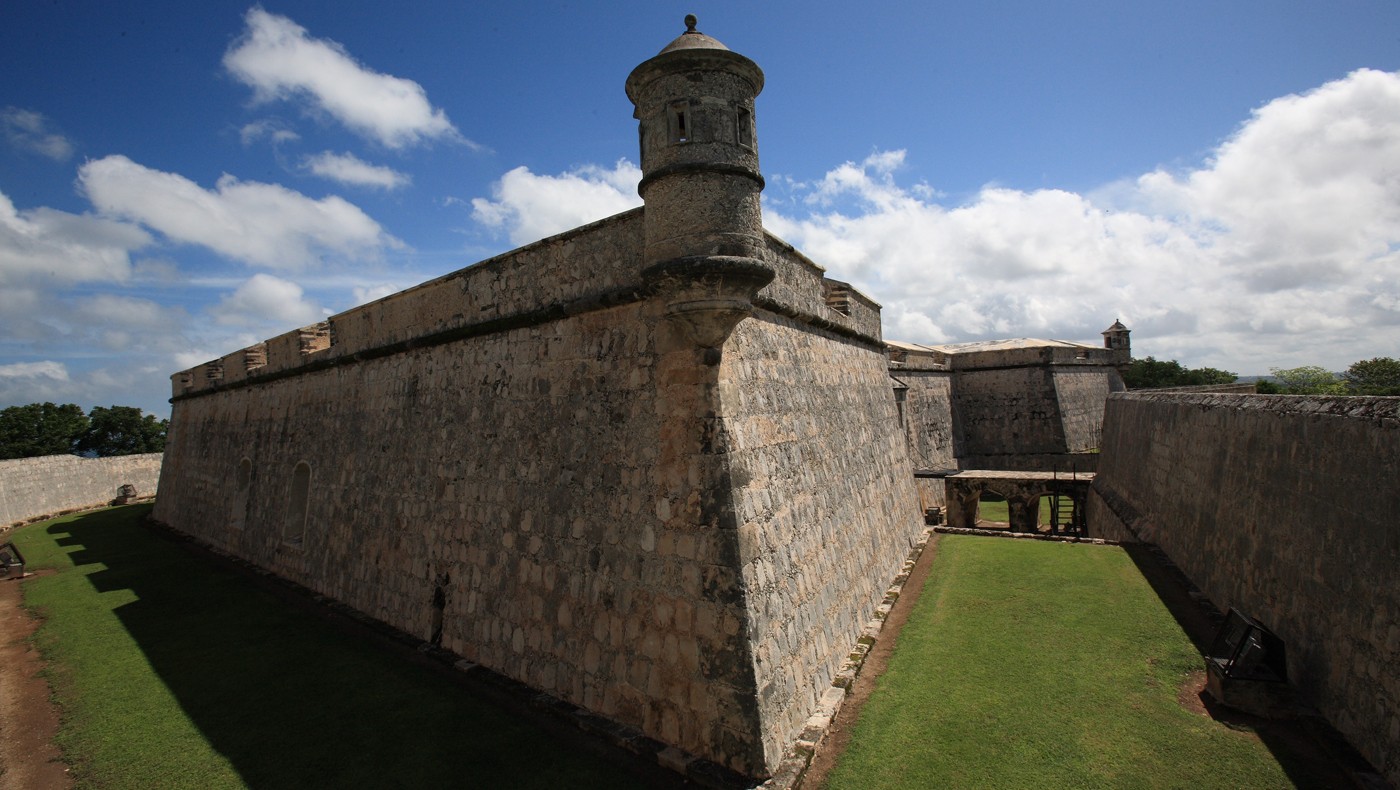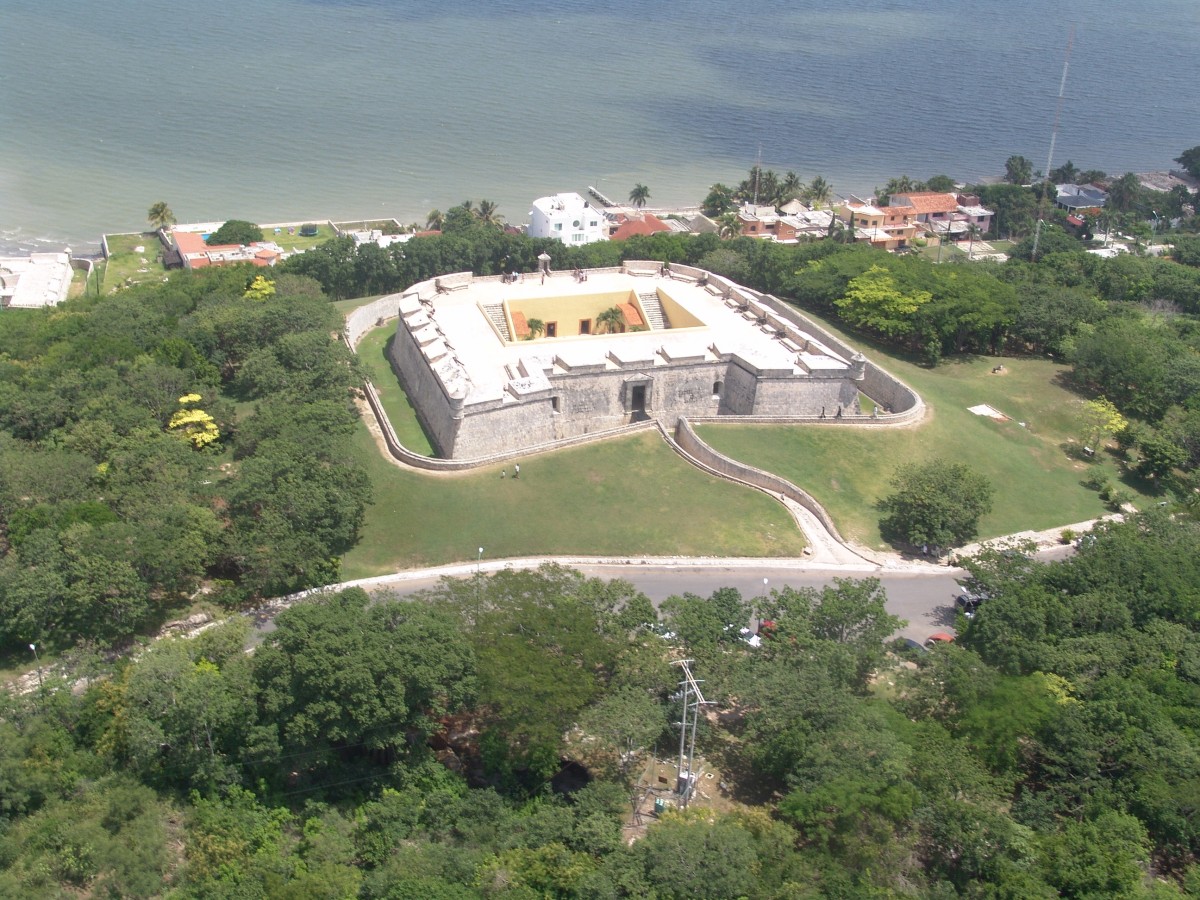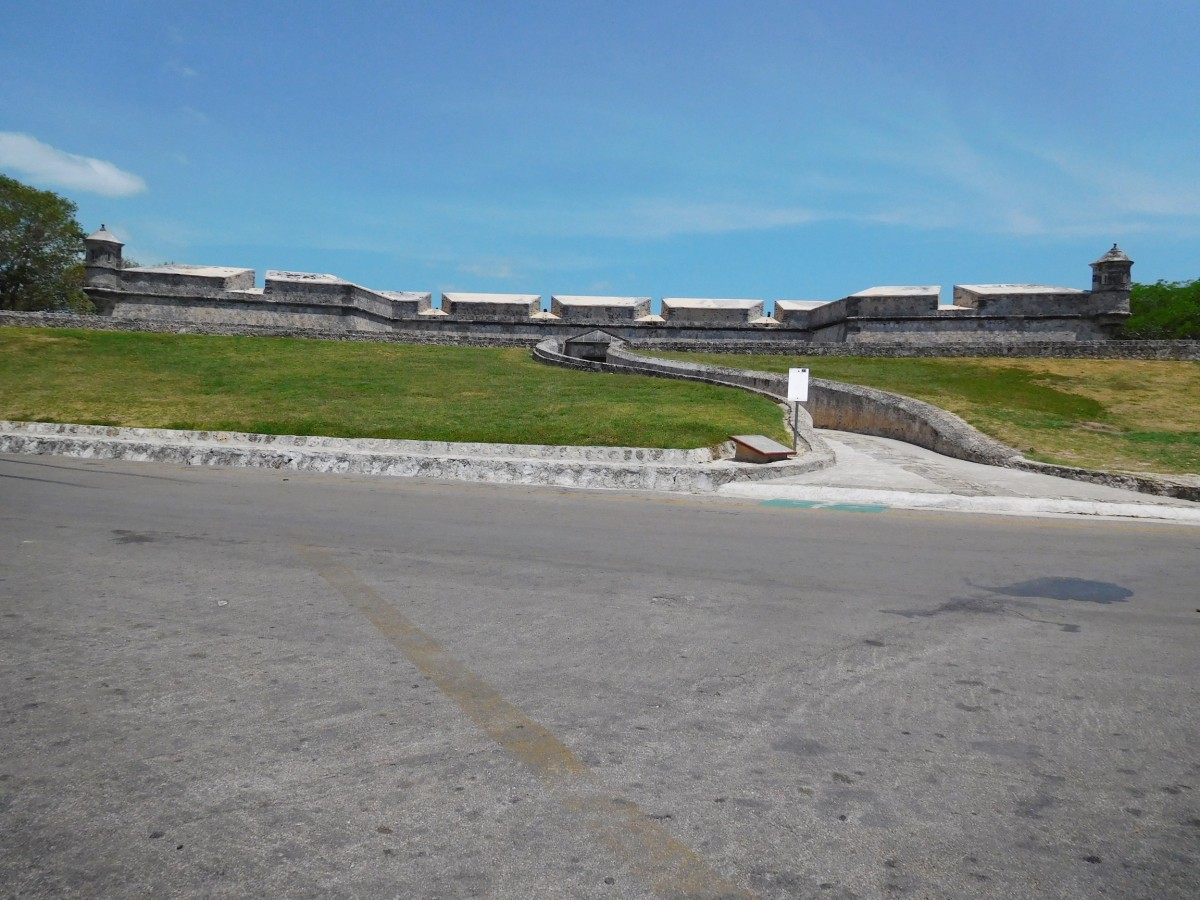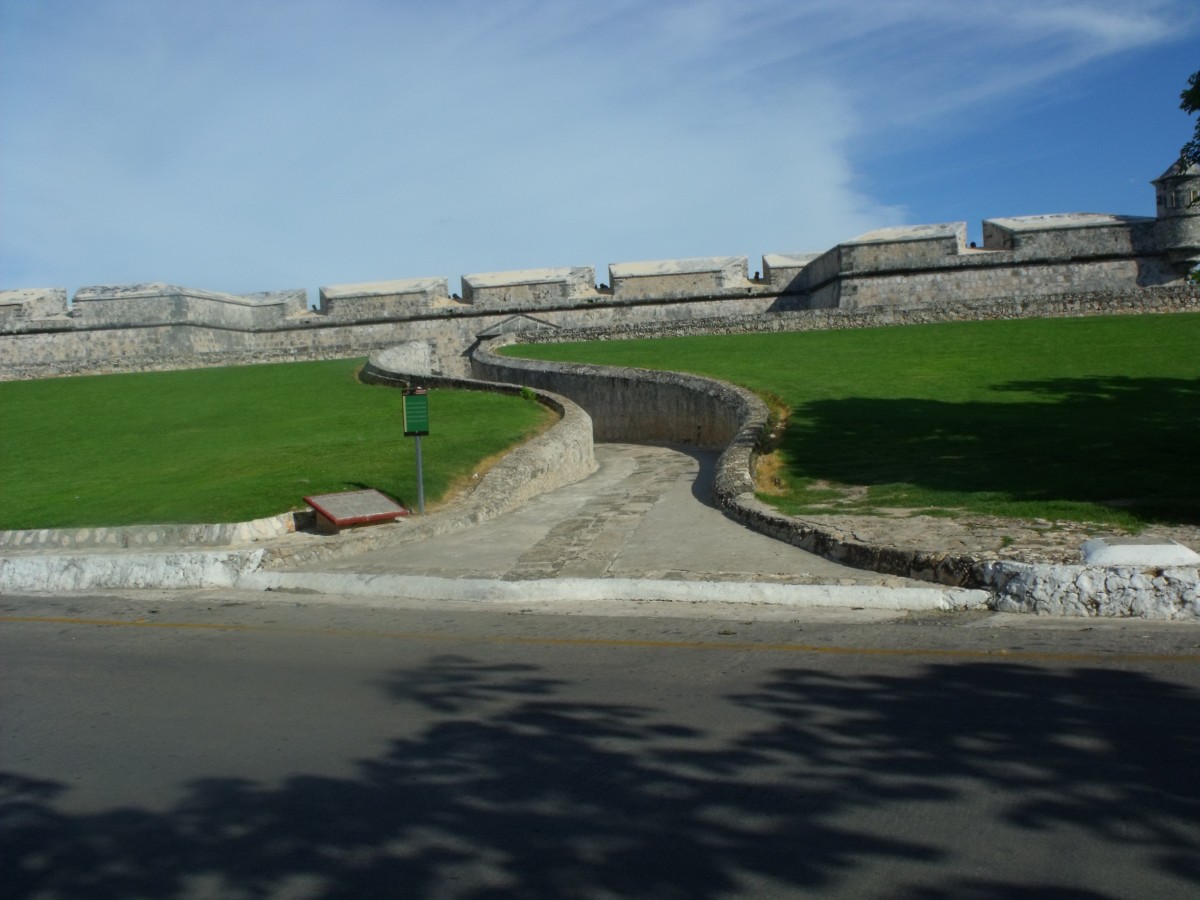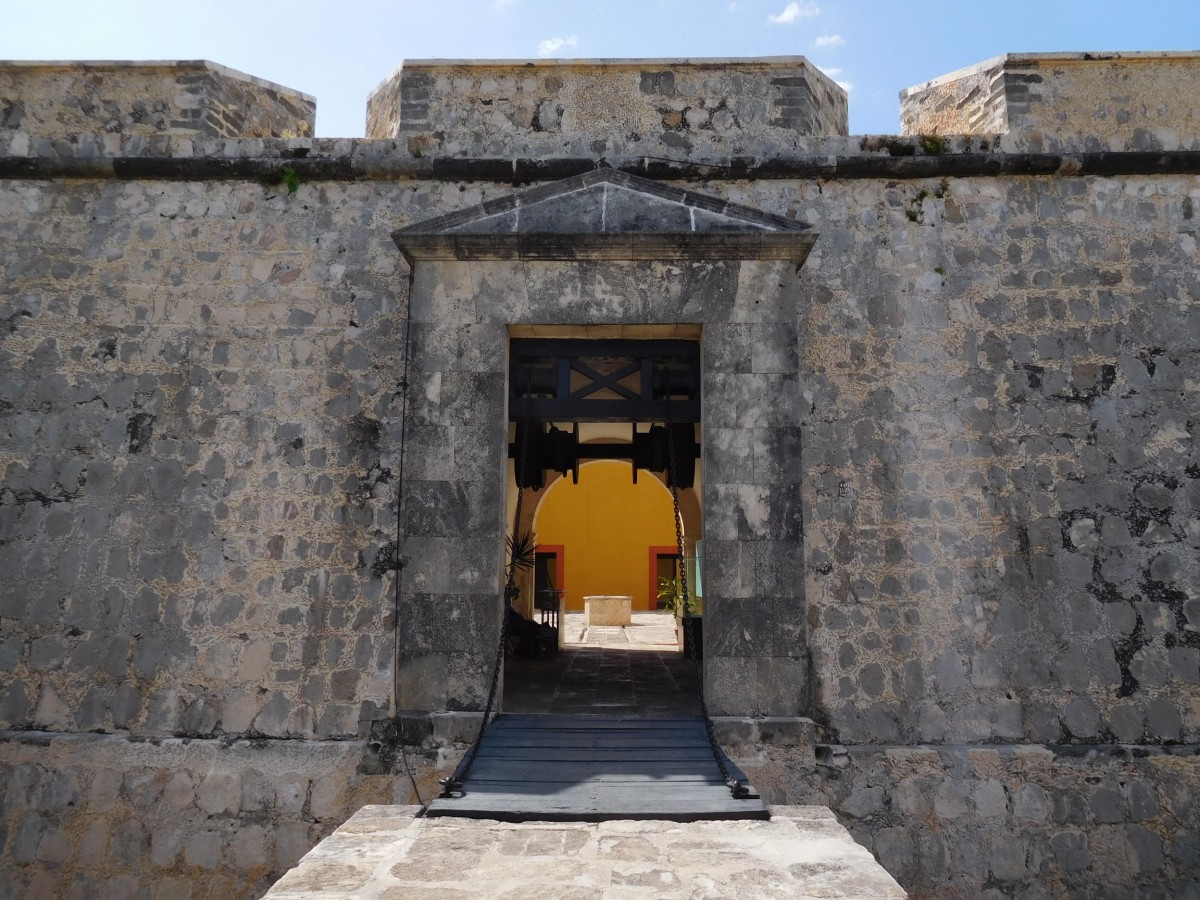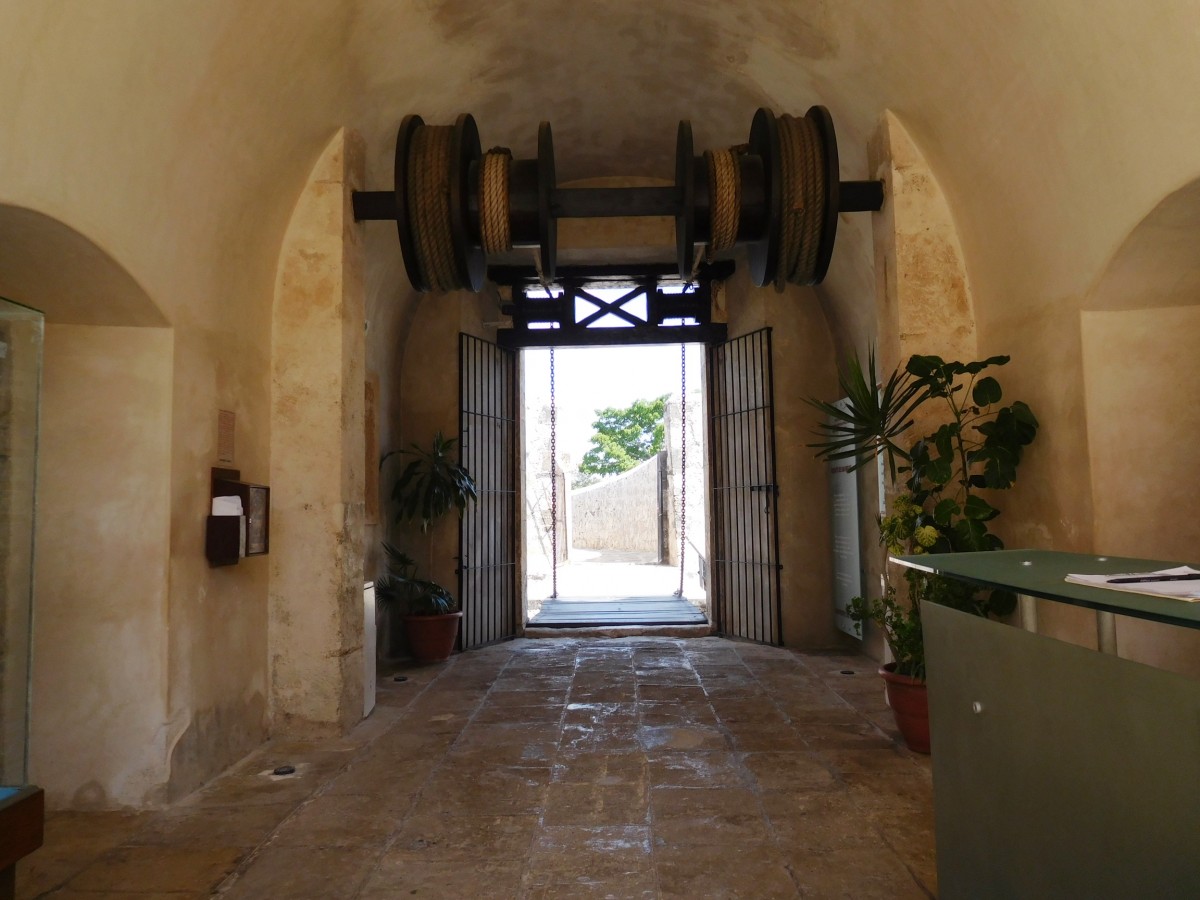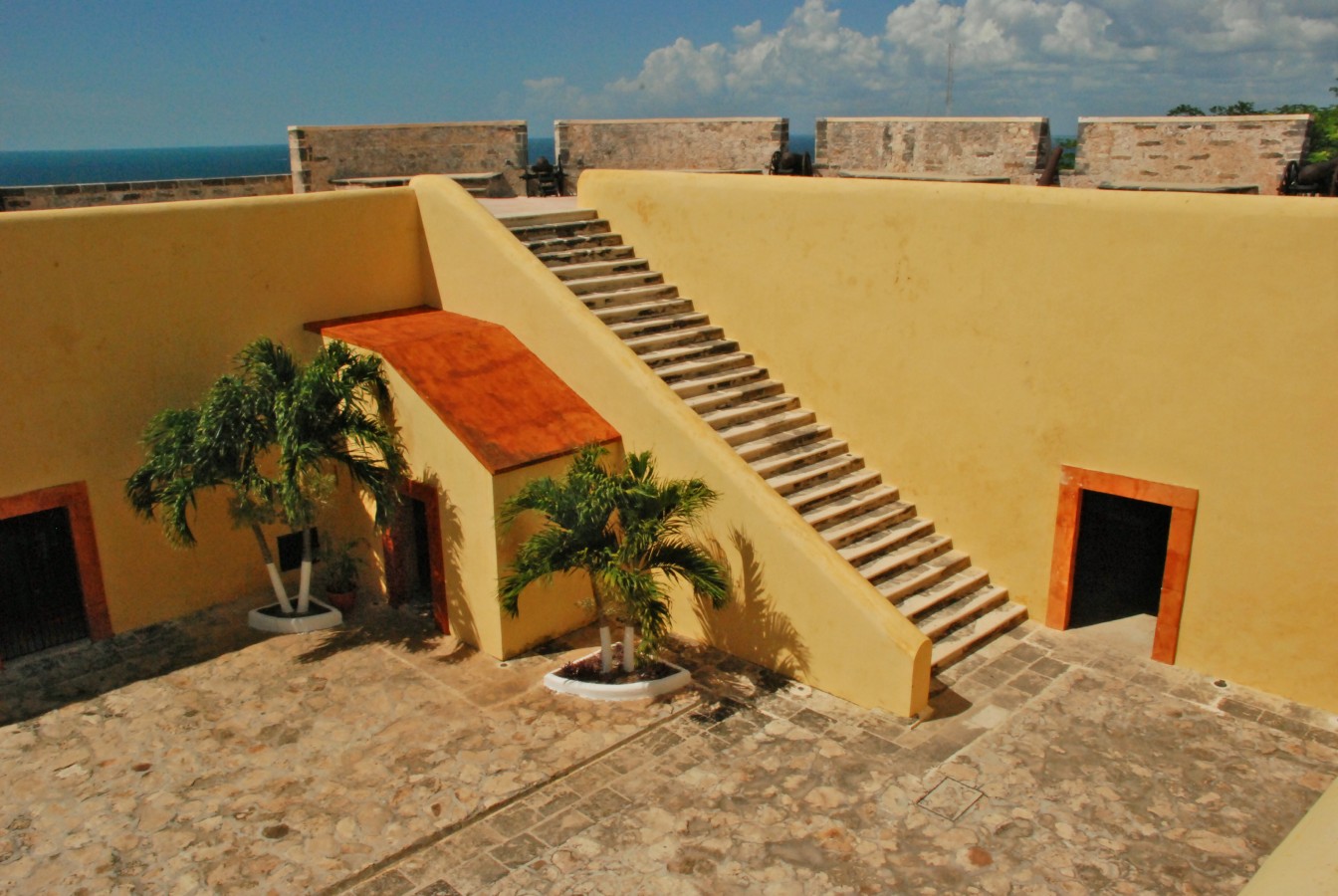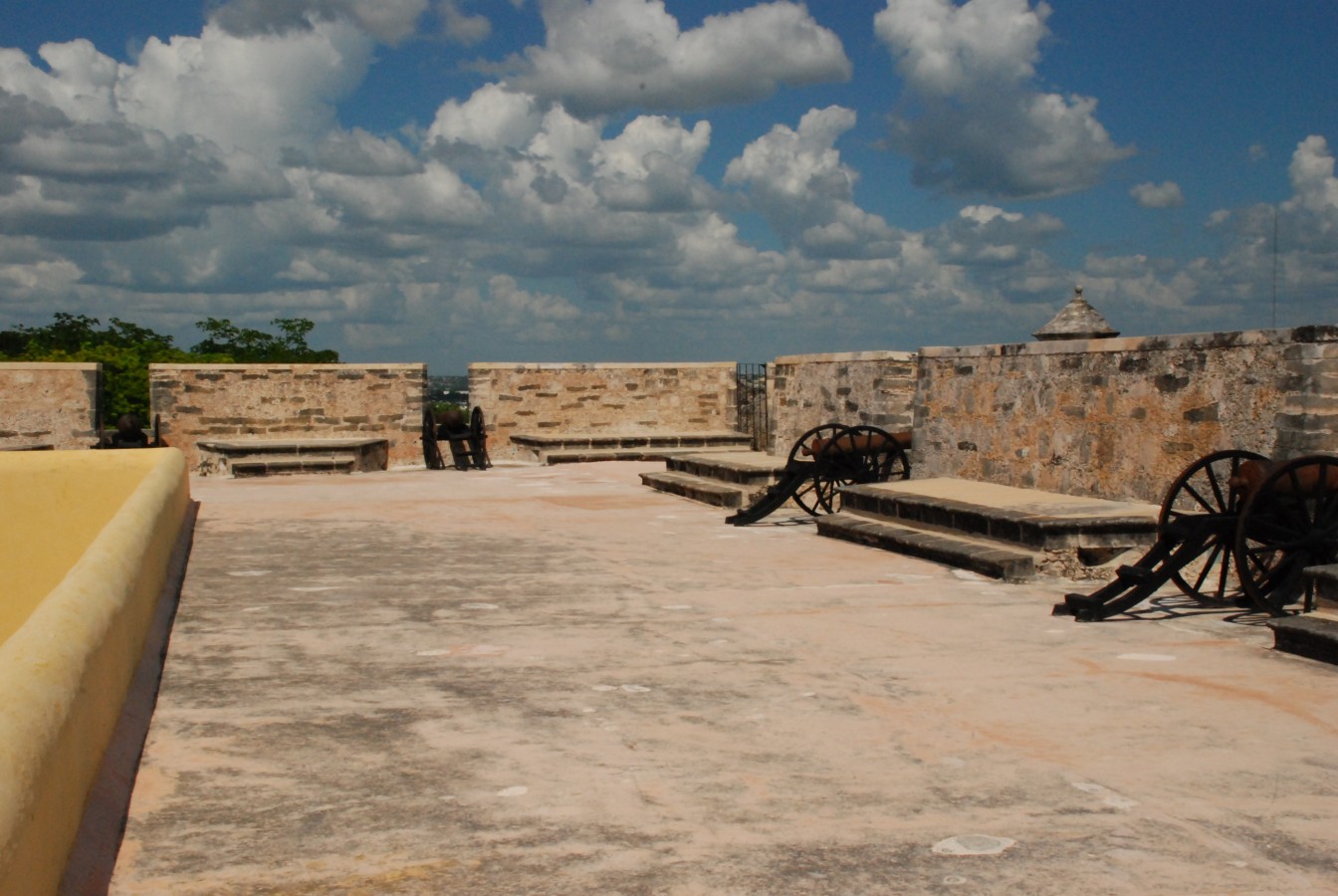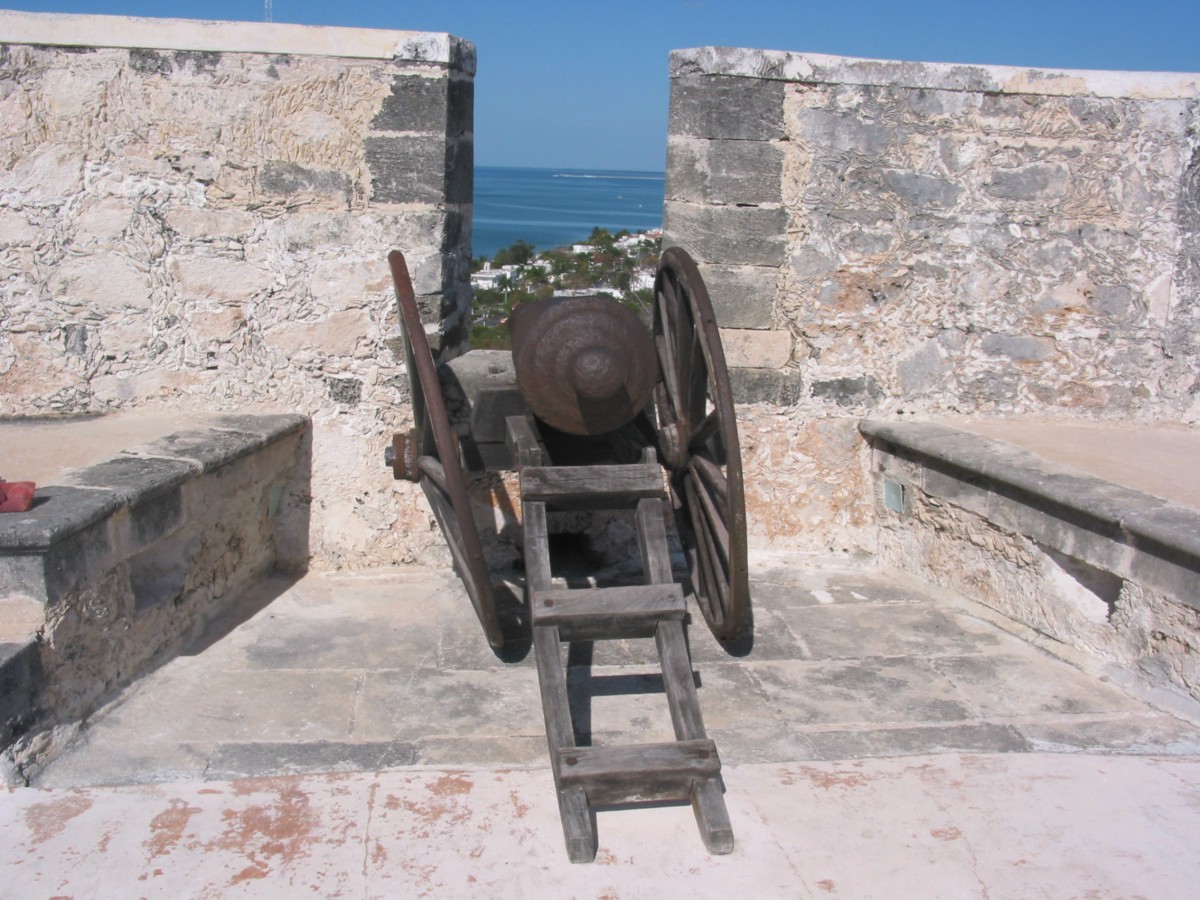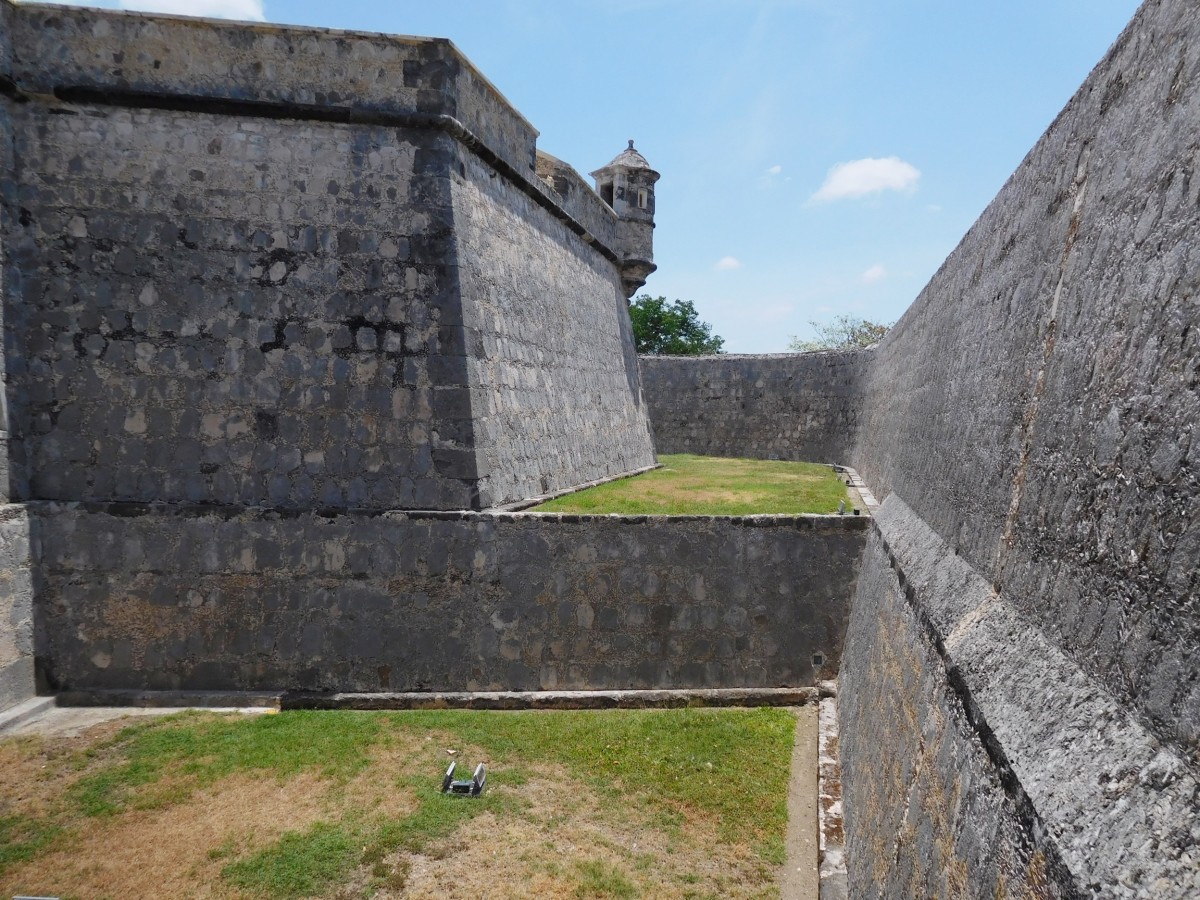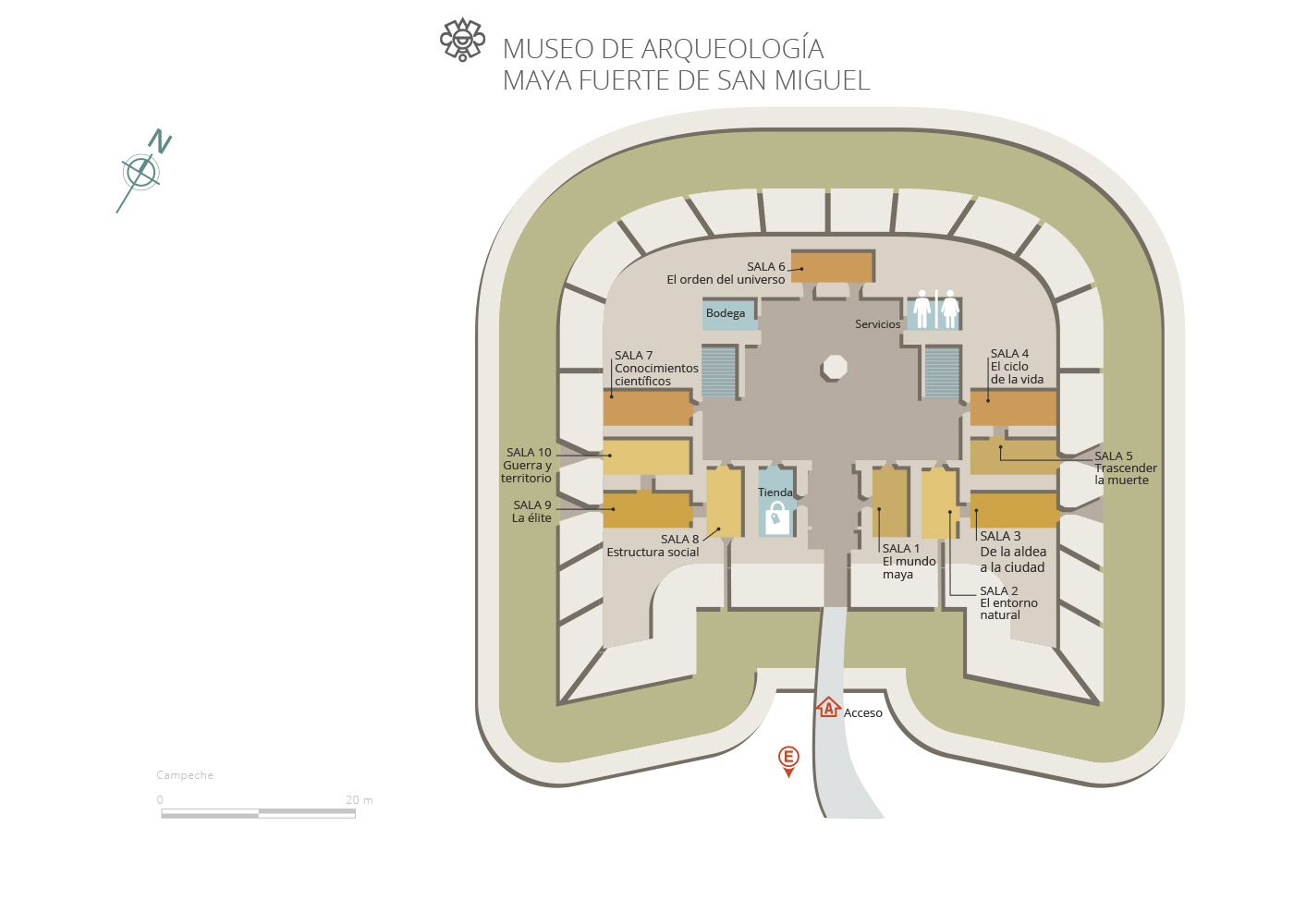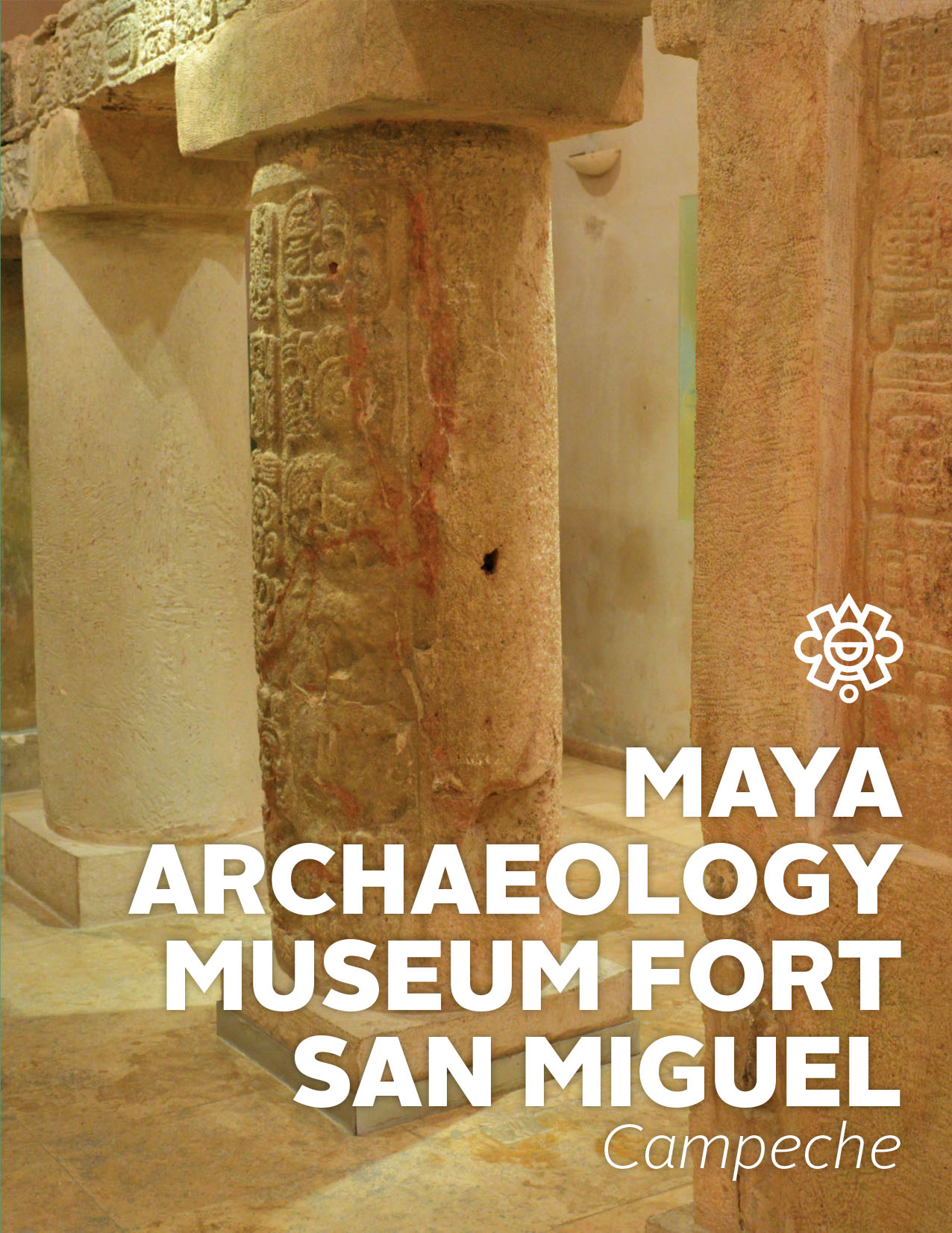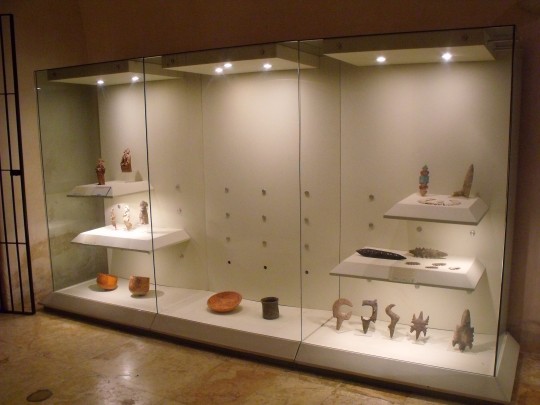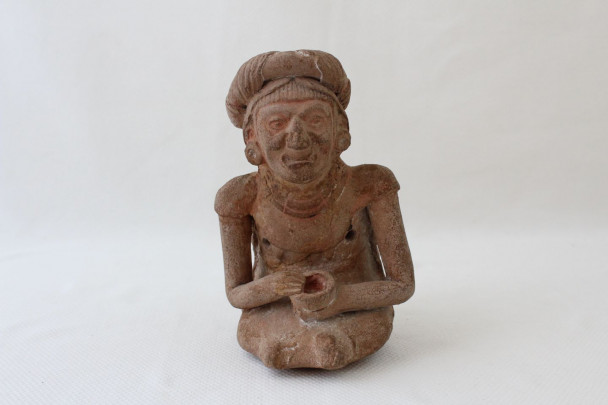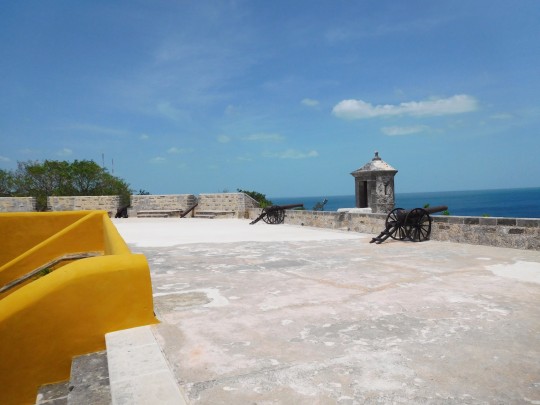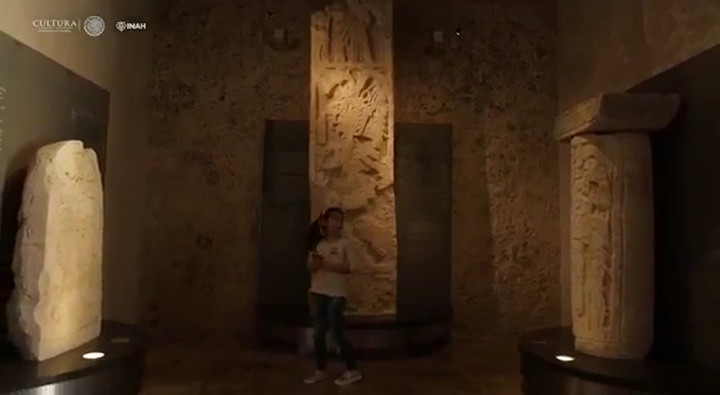Museo de Arqueología Maya, Fuerte de San Miguel
In one of the mightiest forts of the vice-royal period, dating from the late eighteenth century, this museum is now home to two unique collections: the funerary jade masks of Calakmul, and the funerary ceramic figures of Jaina. In addition, there are some remarkable Mayan stone sculptures. The architecture and splendid collections of the Fuerte de San Miguel were among the main reasons why the city of Campeche was listed by the UNESCO as a World Heritage Site in 1999.
Local
About the museum
The Maya Archeological Museum on the site of the Fuerte de San Miguel is a seventeenth-century building, forming part of [Campeche’s] defense system that consisted of two hilltop forts and four batteries on the coast. This construction was specified as a reason for the city becoming a UNESCO World Heritage Site as a “Fortified Historic City” in 1999.
In 1963, the building was restored to become a museum of weaponry and seamanship; in 1978 its collection was replaced by the displays of the Museum of Mayan Archeology. A refurbishment in 1999 renewed the exhibition design and the collection was expanded to include objects from various archeological sites across the state.
There are two collections: one consists of jade funerary masks from the tombs of the Rulers of Calakmul, the other is a display of funerary figurines from the island of Jaina. Other important items include a pot with an iguana-shaped lid, hinting at a rich history of religious ideas expressed iconographically, and an earthenware pot with a lid in the form of a black panther’s head or a night sun, both discovered at the Becán archeological site. The stone drum sculpture, featuring the image of a queen, comes from the site of Edzná or “House of the Itzaes”.
The fortification of New Spain’s coastlines have a long history. The Bourbon kings of France, Spain and Naples with Sicily (the southern half of the Italian peninsula) sealed a series of “family pacts” in the eighteenth century which led them to engage in, or stir up, onerous wars, including the Seven Years’ War (1756-1763), which led to the Spanish Empire losing Florida and being forced to recognize the British right to establishing an outpost in modern-day Belize.
As a result, the Yucatán Peninsula—which, like Florida, “closed off” the Gulf of Mexico to trade—found itself in a precarious position; by the mid-eighteenth century the port of Campeche had already been attacked by English pirates, and the Spanish galleons that carried New Spain’s silver and Peruvian gold, along with many other goods—including products from Asia that had come via Acapulco—were regularly plundered by English and Dutch pirates. The Spanish government then decided to equip the coasts of New Spain with a series of forts, as part of a plan drawn up by the infantry brigadier Agustín Crame, and this system included the Fuerte de San Miguel in Campeche on a hill called La Eminencia, to the southwest of the city. This fort was eventually completed in 1779, together with the coastal batteries of San Luis and San Fernando, boasting artillery that made it very difficult for enemy invaders to disembark. The works were supervised by the king’s deputy, Don Leandro Poblaciones.
Later abandoned, following Mexico’s Independence from Spain the Ministry of War took over responsibility for the fort, and its restoration under the INAH’s supervision began in 1963. Two years later it opened as a museum, and in 1999 it received additions to its collections from various parts of the state of Campeche.
In 1963, the building was restored to become a museum of weaponry and seamanship; in 1978 its collection was replaced by the displays of the Museum of Mayan Archeology. A refurbishment in 1999 renewed the exhibition design and the collection was expanded to include objects from various archeological sites across the state.
There are two collections: one consists of jade funerary masks from the tombs of the Rulers of Calakmul, the other is a display of funerary figurines from the island of Jaina. Other important items include a pot with an iguana-shaped lid, hinting at a rich history of religious ideas expressed iconographically, and an earthenware pot with a lid in the form of a black panther’s head or a night sun, both discovered at the Becán archeological site. The stone drum sculpture, featuring the image of a queen, comes from the site of Edzná or “House of the Itzaes”.
The fortification of New Spain’s coastlines have a long history. The Bourbon kings of France, Spain and Naples with Sicily (the southern half of the Italian peninsula) sealed a series of “family pacts” in the eighteenth century which led them to engage in, or stir up, onerous wars, including the Seven Years’ War (1756-1763), which led to the Spanish Empire losing Florida and being forced to recognize the British right to establishing an outpost in modern-day Belize.
As a result, the Yucatán Peninsula—which, like Florida, “closed off” the Gulf of Mexico to trade—found itself in a precarious position; by the mid-eighteenth century the port of Campeche had already been attacked by English pirates, and the Spanish galleons that carried New Spain’s silver and Peruvian gold, along with many other goods—including products from Asia that had come via Acapulco—were regularly plundered by English and Dutch pirates. The Spanish government then decided to equip the coasts of New Spain with a series of forts, as part of a plan drawn up by the infantry brigadier Agustín Crame, and this system included the Fuerte de San Miguel in Campeche on a hill called La Eminencia, to the southwest of the city. This fort was eventually completed in 1779, together with the coastal batteries of San Luis and San Fernando, boasting artillery that made it very difficult for enemy invaders to disembark. The works were supervised by the king’s deputy, Don Leandro Poblaciones.
Later abandoned, following Mexico’s Independence from Spain the Ministry of War took over responsibility for the fort, and its restoration under the INAH’s supervision began in 1963. Two years later it opened as a museum, and in 1999 it received additions to its collections from various parts of the state of Campeche.
November 1986
Map
An expert point of view

Antonio Benavides Castillo
Centro INAH Campeche
-
+52 (981) 816 9136, ext. 138036
-
This email address is being protected from spambots. You need JavaScript enabled to view it.
-
FACEBOOK
Directory
Encargado
Jonathan Miguel García González
This email address is being protected from spambots. You need JavaScript enabled to view it.

